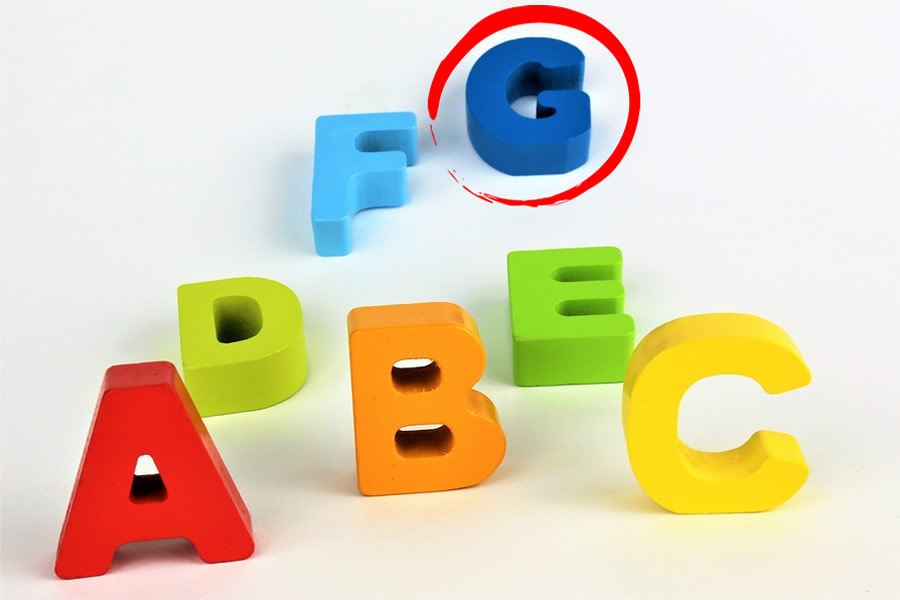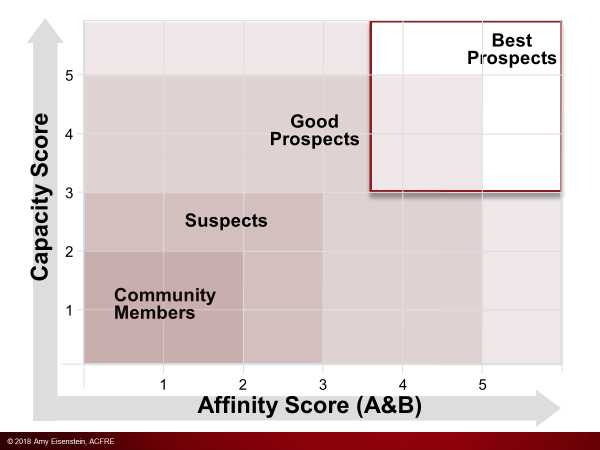
If you are responsible for major gift fundraising, one of your important tasks is to identify prospective major gift donors. In other words, you need to discover those people who are most likely to give major gifts to your organization.
Frequently, development professionals will call me in search of “new” potential prospects for major gifts. Those of us who have been in the field for a while, understand that major gift donors aren’t “out there” but are already a part of your organization’s donor base.
Common Criteria to Identify Major Donors
When searching for major donors for your organization, it’s important to focus on several criteria. Some of the obvious ones include:
- Do they love your organization?
- Are they passionate about your mission?
- Are they philanthropic – or generous in nature?
- Do they have the financial capacity to make a major gift at your organization?
If you’re not sure what constitutes a major gift at your organization, see my post: How to Calculate the Amount of a Major Gift and 3 Reasons Why Size Matters.
Identifying Donors — Easy as A, B, C
Many fundraising professionals use the acronym “ABC” to help with donor identification (when creating a list of prospective major gift donors). You may have heard this in a variety of forms before, but I choose the following:
A – Access
B – Belief
C – Capacity
A stands for access. Do you have access to the person? Can you connect with them via email, telephone, or in person? If they’ve been a donor to your organization, hopefully you have some means of communication.
B stands for belief. Do they believe in the cause or mission of your organization? In other words, do they care?
C stands for capacity. Do they have the financial capacity to make a major gift?
It’s important to note the order in which we remember ABC, because if you reverse A and C (and for make A stand for “ability” or “amount” and make C stand for “contact”), you may ask the wrong questions first.
For example, the first question you might ask yourself is “who’s rich?”
If you ask, “who’s rich?” first, you come up with names like Oprah Winfrey and Bill Gates. Although they are indeed rich, it’s unlikely you have access to them or that they believe in your cause.
So, when building your portfolio of major gift donors, it’s important to remember to consider ABC. But there’s another letter that’s equally important…
Focusing Your Prospect List with ABC in Mind
In Mastering Major Gifts, my 7 week, online course, I have participants do an exercise where they rate donors from their database (their prospective MAJOR GIFT donors) based on the ABC’s outlined above. This helps focus their list of prospective major gift donors to a manageable portfolio size. (You can learn more about Mastering Major Gifts here.)
Thinking about your prospects in this way will help you focus on your best prospective donors.
The affinity score, which encompasses access and belief, encourages you to consider how “close” someone is to your organization. In other words, how much they love your organization, how passionate they are about it, and how connected they are.
Now, let’s move on to that other letter I mentioned above — it’s the letter “G” for Generosity.
How Important is Generosity When Identifying Donors?
A built-in part of the exercise I described above is to only consider those who have already made gifts to your organization — in other words, those who have given large gifts and those who are loyal donors (repeat donors) at any level. This takes into account (to some degree) their generosity.
A few weeks back, Bloomerang introduced a Generosity Score™ into their donor management software. It’s brilliant for a variety of reasons, but the most obvious is that generous people are more likely to give to your organization.
When I asked about the new Generosity Score, I received the following responses:
The biggest thing we run into is people thinking that their best prospects are just rich people. Wealth is obviously a good thing, but not the only thing (or dare I say not the most important thing).
— Steven Shattuck, Bloomerang
And…
A large number of wealthy families do not engage in philanthropy. The odds of convincing one of them to donate are much lower than families who are philanthropic by nature.
— Jay Love, Bloomerang
So, when looking to identify your best major gift prospects, you want to focus on those who have given to your organization more than once … and give generously to other organizations.
Start Thinking of ABC as “ABC & G”
It’s time to update the ABC acronym to include G for “generosity”.
Granted, ABC alone is a more memorable acronym, but G is just as important. This is something I plan to more fully integrate into Mastering Major Gifts in the months ahead, and it’s something that all of us should incorporate into our thinking about prospective donors.
What are some ways you might assess a prospective donor’s generosity? Leave your comment below.


Amy,
It certainly makes a lot of sense as we see people who have great capacity but are not giving. and we see others who give seemingly beyond their capacity!
Bonnie
The grid is especially helpful. Thank you!